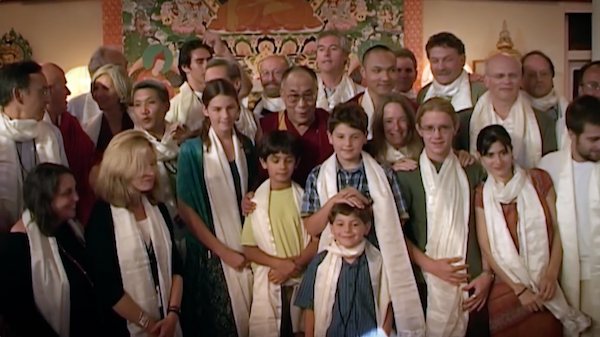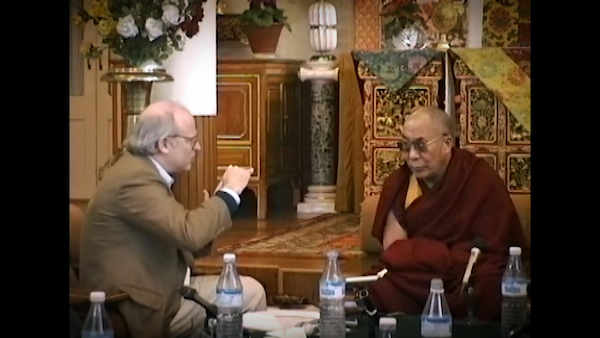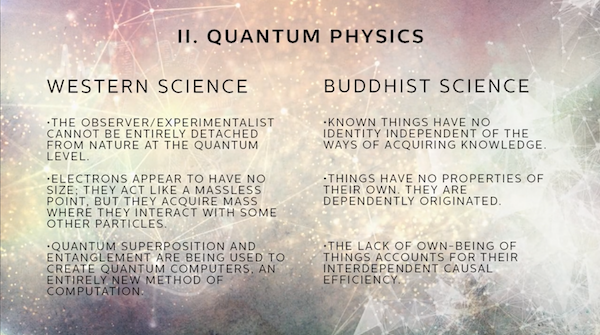
Dense with ideas, The Dalai Lama—Scientist wants to show that Buddhism is not just compatible with science, but has actually predicted advances in quantum physics, neurology, and other fields. It also serves as a quick biography of the current Dalai Lama, an intensely curious thinker whose ideas are fascinating and always worthwhile.
Written and directed by Dawn Gifford Engle, the documentary has the look and feel of an infomercial, only one without a clear narrative path. The movie’s structure is so awkward that it’s difficult to determine its direction or purpose. Viewers will be well into The Dalai Lama—Scientist before they realize they’re watching a series of clips from 30 years’ worth of talks and conferences.
Born into a poor farming family in Tibet in 1935, the 14th Dalai Lama was forced to flee Chinese troops in 1959. Settling in India, he continued his childhood fascination with engineering by cultivating relationships with the world’s leading scientists.
With backing from entrepreneur Adam Engle, the Dalai Lama chaired the first Mind and Life dialogue in 1987. Over the next 30 years, he hosted elite scientists like Francisco Varela (who would become a close friend), Carl von Weizsäcker, Arthur Zajonc, George Greenstein, Anton Zeilinger, Michel Bitbol, Steve Chu, and many more.
In 1989, the Dalai Lama was awarded the Nobel Peace Prize. Several Nobelists have attended the Mind & Life dialogues, as well as dignitaries like the Chair of the Department of Psychology at Harvard and the director of the National Institute of Health.
Excerpts from the dialogues make up the majority of The Dalai Lama—Scientist, and the ideas examined are deep and rewarding. But the structure of the documentary makes it more difficult than necessary for viewers to follow along. Explanatory charts and animation are at times more confusing than what the panelists are saying.

But it’s fascinating to watch the world’s greatest physicists and philosophers grapple with Buddhism. Several tell interviewers of their initial skepticism of the Mind and Life dialogues, the Dalai Lama, and religion in general. But like many of the others, Zajonc found the Dalai Lama an “intellectual wrestler,” someone “grabbing my ideas and testing them.”
The Dalai Lama has an enviable platform as the leader-in-exile of Tibet and spiritual teacher. Like Pope Francis in the Roman Catholic Church, the Dalai Lama has become a world figure, speaking out for refugees, the environment, women’s rights, and in particular nonviolence. He has been consistent in his efforts to align Buddhism with science.

The level of discourse in the film is daunting. Greenstein and the Dalai Lama argue over whether a “repeated kind of dissolution” suggests multiple universes, Zeilinger explains quantum computers, and here’s Chu on electrons: “The lack of own-being of things accounts for their interdependent causal efficiency.”
But even in the thickest weeds, the Dalai Lama maintains his humor, his willingness to expand ideas, and his ability to reach across disciplines to make startling connections. The respect and even awe of the participants in the dialogues is palpable.
Viewers don’t need to know much about cosmology, cognitive science, brain plasticity, molecular biology, or even Buddhism to appreciate the Dalai Lama’s warm presence and deep laughter. Watching The Dalai Lama—Scientist is like diving into a deep pool of knowledge. It’s an exhilarating experience.
The documentary screened at the Venice International Film Festival in 2019. The PeaceJam Productions movie can be streamed on demand on Vimeo, Google Play, Amazon, Kanopy, iTunes and Vudu. DVDs will also be available at Target, Barnes and Noble, Best Buy, and Amazon.
Photos courtesy Elizabeth Holloway (Peace Jam)


